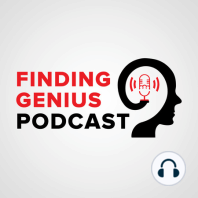38 min listen

Mugshot Immunology: CRISPR from a Bacteriophage Perspective with Joseph Bondy-Denomy
Mugshot Immunology: CRISPR from a Bacteriophage Perspective with Joseph Bondy-Denomy
ratings:
Length:
38 minutes
Released:
Dec 1, 2020
Format:
Podcast episode
Description
One of the most exciting recent discoveries in microbiology involves an immunological mechanism of a single-celled organism. CRISPR-Cas technology is a technique bacteria use for fighting infection with phages. This podcast dives into the wild world of CRISPR and bacteriophage interplay. Listen and learn How the timeline of CRISPR discovery progressed into tool developments like CRISPR-Cas9, What are the mechanical details of CRISPR, such as how bacteria steal the phage DNA, and How CRISPR phage therapy might progress and what are other bacterial immunology discoveries. Joseph Bondy-Denomy is an associate professor of Microbiology and Immunology at UCSF. His lab focuses on understanding how bacteria deal with their predators like bacteriophages, which are bacteria-infecting viruses. While they don't infect humans, they cover us and inhabit our bodies, looking for prey. CRISPR is one way bacteria protect themselves from phages, and scientists learned how to utilize the CRISPR for their own purposes, enabling foundational techniques for gene editing in the last decade. CRISPR-Cas9 and bacteriophage interaction in particular has made the news because of the usability of the Cas9 protein. Dr. Bondy-Denomy offers listeners effective analogies for understanding how this process works, comparing this to taking a mugshot of a criminal, giving that bacteria information to retain and work from when the same type of phage tries to invade and infect again. He explains exactly how the bacteria do so, storing the DNA snip in a region that lends CRISPR its name, turns it into RNA, and then guides the CRISPR proteins, like Cas9, to the same phage type if it returns, preventing infection. He explains how understanding this mechanism led to two techniques: putting these systems into mammalian cells and showing how they could cut DNA and change a sequence intentionally and turning the mechanism into a programmable binding system. He discusses his own research as well, including continuing to understand how phages avoid CRISPR-Cas immunity and exploring new bacterial immune systems that have been discovered in the last few years. For more about his work, follow him on Twitter as @joeBondyDenomy and see his lab's website: bondydenomylab.ucsf.edu. Available on Apple Podcasts: apple.co/2Os0myK
Released:
Dec 1, 2020
Format:
Podcast episode
Titles in the series (100)
BlockChainEDU – Interview with Dean Masley of BlockChainEDU.org: Today’s guest is Dean Masley of BlockChainEDU.org BlockChainEDU.org is a community of students & alumni across the world. They are creating bitcoin & block-chain clubs in their universities. In this interview,… by Finding Genius Podcast